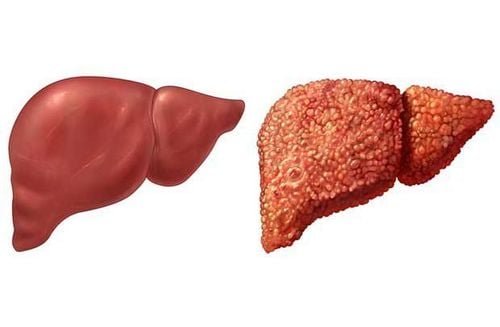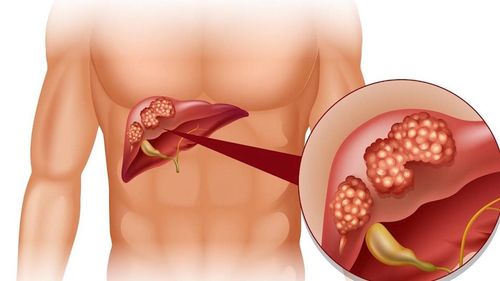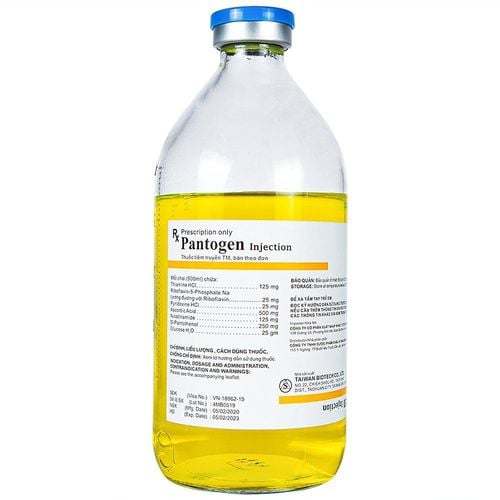This is an automatically translated article.
The article was professionally consulted by a doctor from the Department of Medical Examination & Internal Medicine - Vinmec Danang International General Hospital.Alcohol and alcohol abuse always go hand in hand with liver diseases. So how is the correlation between alcohol use and liver damage, let's find out through the article below.
1. Alcohol and alcoholic liver disease
The rate of alcohol consumption in Vietnam is currently very high. Disorders related to excessive alcohol use are very common, predominate in males. If only for liver diseases, alcohol abuse leads to the following consequences (usually occurring sequentially) as follows:
Fatty liver (over 90%) Alcoholic hepatitis (25%) Alcoholic liver (15%) Hepatocellular carcinoma may also develop in the background of patients with cirrhosis.
After drinking, alcohol in alcohol is partly broken down by the digestive system, the rest will be metabolized in the liver. In the process of metabolizing alcohol will produce substances that can damage the liver. The more alcohol you drink, the more likely it is to cause liver damage. The liver is an organ with a high compensatory capacity, small injuries will not cause serious effects, but damage can accumulate along with the process of alcohol abuse without the patient himself knowing. realize. If the patient remains within the limits of hepatic compensation, the patient will have no signs or symptoms. When there are symptoms outside, it is possible that the patient's liver has decompensated.
2. How much alcohol can affect the liver
The volume of alcohol in a drink is estimated by multiplying the volume of the drink (in mL) by the percentage of alcohol. To progress to hepatitis, cirrhosis, the amount of alcohol consumed usually must be more than 60-80 g of alcohol per day for more than 20 years in men and 20-40 grams of alcohol per day in women. If alcohol consumption exceeds 230g per day for 20 years, the risk of cirrhosis is up to 50%.
However, it is also important to note that not all chronic alcohol abusers develop and develop liver disease. The ability and limit of alcohol consumption varies from person to person, so the criteria for alcohol consumption is only one of the main factors that promote alcoholic liver disease.
Gender is also one of the main factors for alcoholic liver disease, because women are more vulnerable than men, even when adjusted for body size. Women are at increased risk when they consume half as much alcohol as men (20g to 40g of alcohol). The risk in women is easily increased because women have less alcohol dehydrogenase enzymes in the stomach lining, so the amount of alcohol is metabolized in the liver will be greater, causing more damage to the liver.
Alcoholic liver disease also has a genetic component, because the disease often runs in families. Other factors that contribute to the occurrence of alcoholic liver disease include drinking alcohol outside of meals, genes, poor nutrition, vitamin A and E deficiency, accumulation of iron in the liver (hemochromatosis), hepatitis C virus, etc.

Lạm dụng rượu bia quá mức sẽ dẫn đến tổn thương gan
3. The progression of alcoholic liver disease
Fatty liver, alcoholic hepatitis, and cirrhosis are often thought of as separate conditions that represent the progression of alcoholic liver disease, despite the fact that their manifestations often overlap. :
3.1 Fatty liver
This is the first process and the most common consequence of drinking too much alcohol. Fatty liver is preventable and reversible (ie, potentially reversible). Fat deposits in hepatocytes look like large drops or pockets of triglycerides, taking the place of the cytoplasm of normal liver cells. This phenomenon is most pronounced in hepatocytes near blood vessels. The size of the liver grows larger and larger.
3.2 Alcoholic hepatitis
This is a combined condition of fatty liver, diffuse hepatitis, and hepatocellular necrosis (usually central), with varying degrees of severity. Injured hepatocytes are hypertrophic with a large cytoplasmic granule (bubble degeneration) or contain small protein filaments in the cytoplasm (Mallory body or alcoholic transparent body). Severely damaged liver cells will gradually appear necrotic. The veins in the liver and the sinus veins are narrowed. Cirrhosis may also begin to be present.
Từ viêm gan do rượu, bia, bệnh có thể tiến triển thành xơ gan
3.3 Alcoholic cirrhosis
This is an advanced stage of liver disease, characterized by fibrosis and destruction of the normal liver structure. The amount of fat present in the liver at this stage can vary widely. Alcoholic hepatitis may still be present. To compensate for the damage that has occurred, the process of liver regeneration forms small nodules (small nodular cirrhosis). However, this compensatory process leads to a pathological spiral, more and more fibrosis forms and spreads, dividing the liver tissue into large nodules (large nodular cirrhosis).
Please dial HOTLINE for more information or register for an appointment HERE. Download MyVinmec app to make appointments faster and to manage your bookings easily.
Article reference source: merckmanuals.com












